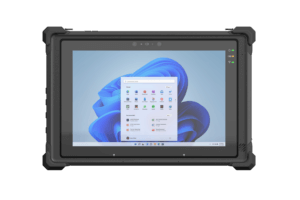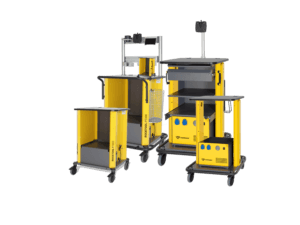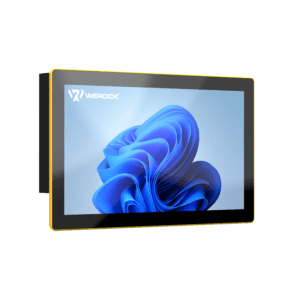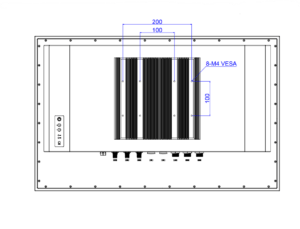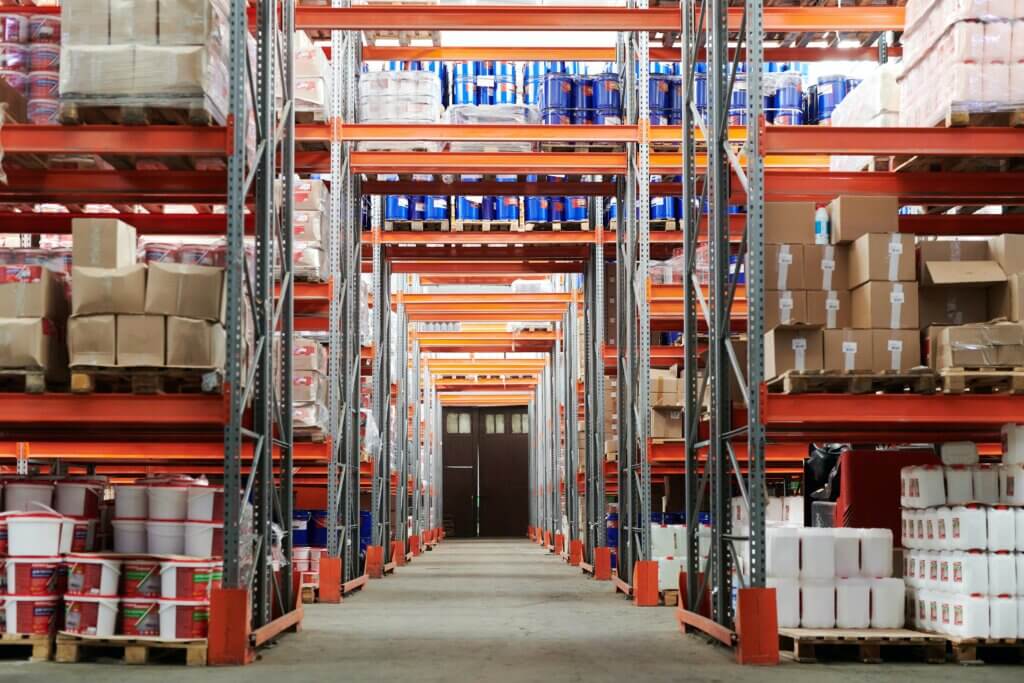In industrial environments, a fast and reliable WLAN is important for controlling and monitoring machines and systems, collecting and analyzing data, and supporting employees in their work. In recent years, WiFi5, WiFi6, and WiFi6E WLAN standards have evolved, and they differ from each other in terms of data transfer rates, reception quality, and stability. In this blog post, we will highlight the use of these standards in industrial environments and why choosing a WLAN is about more than just great data rates.
Comparison of WiFi5, WiFi6 and WiFi6E
WiFi5 is the standard that is currently most widely used. It was introduced under the name IEEE 802.11ac and offers a maximum data transfer rate of 1.3 Gbit/s. WiFi6 is the successor to WiFi5 and was introduced under the name IEEE 802.11ax. It offers a maximum data transfer rate of 9.6 Gbit/s and is capable of connecting multiple devices simultaneously. WiFi6E is an extension of WiFi6 and offers an even higher data transfer rate of up to 14 Gbit/s. The main difference from WiFi6 is that WiFi6E uses the 6 GHz frequency range, while WiFi6 uses the 2.4 GHz and 5 GHz frequency ranges. The 6 GHz frequency range is less crowded than the 2.4 GHz and 5 GHz frequency range and therefore offers better transmission capabilities. However, there are some limitations when using WiFi6E:
- Availability: WiFi6E is currently only available in a few countries, as the 6 GHz frequency band has not yet been released for WiFi use in many countries.
- Device support: WiFi6E is currently supported by only a few devices. WiFi6E routers and access points are already available, but the selection of WiFi6E-enabled devices, such as smartphones, tablets and laptops, is still limited.
- Interference: WiFi6E uses the 6 GHz frequency band, which has been used primarily by other wireless services. There is therefore a risk of interference with other wireless services that use the 6 GHz frequency band.
- Range: WiFi6E offers higher data transmission rates than WiFi6, but the range of the signal is shorter. WiFi6E routers and access points typically have lower transmit power than WiFi6 devices, reducing the range of the signal.
- Cost: WiFi6E devices are usually more expensive than WiFi6 devices. Therefore, deploying WiFi6E may be a more expensive alternative for some organizations.
It is important to consider these constraints when deciding to deploy WiFi6E and whether WiFi6E is the best WLAN solution in the particular industrial environment.
Why there is more to a good WLAN than high data transmission rates
In industrial environments, large data transmission rates are important for transferring large amounts of data quickly. However, there are other factors that are of great importance for the quality of a WLAN in industrial environments. These include WLAN stability, reception quality and reliability. A WLAN that does not have a stable connection, is intermittent or slow can lead to problems controlling machines and systems and delay work processes.
This causes radio interference or poor reception in warehouses / industrial halls
In warehouses and industrial halls, there are often many metallic objects that can interfere with the WLAN signal. Liquids, walls, doors and ceilings can also weaken the signal. In such environments, it is therefore important to amplify the WLAN signal using repeaters or access points to ensure sufficient reception quality.
Another factor that can lead to radio interference or poor reception in warehouses and industrial halls is electromagnetic interference from machinery and equipment. This interference can affect the WLAN signal and lead to dropped connections or slow transmission rates. To minimize this interference, machines and equipment should be installed as far away as possible from WLAN access points and repeaters.
Why consumer WLAN has no place in industrial environments
Consumer WLAN routers and repeaters are designed for use in private households and generally do not offer sufficient stability and reliability for use in industrial environments. They are often more susceptible to interference and also typically lack features such as a quality-of-service (QoS) setting that allows bandwidth to be allocated in a prioritized manner for specific applications.
There are many vendors that offer industrial WLAN solutions. Some well-known vendors are:
- Cisco Systems: Cisco offers WLAN solutions for industrial applications that feature high performance, reliability, and security.
- Huawei: Huawei offers WLAN solutions for industrial applications that feature high performance, reliability, and high network capacity.
- Ruckus Networks: Ruckus Networks offers WLAN solutions for industrial applications that feature high performance, reliability, and high network capacity.
- Aruba: Aruba offers WLAN solutions for industrial applications that feature high performance, reliability and security.
It is important to take a close look at the various suppliers and their offerings and compare them to find the solution best suited to the individual requirements of the industrial environment. It is also advisable to seek expert advice and, if necessary, carry out pilot projects to test the performance of the various solutions.
Would you rather have a private 5G network?
An alternative to WiFi5, WiFi6 and WiFi6E in industrial environments is to deploy private 5G network. A private 5G network offers high data rates, low latency and high reliability compared to WiFi. However, there are also disadvantages that should be considered when deciding to deploy a private 5G network. The biggest disadvantage is probably the high price. Building a private 5G network requires the purchase of 5G base stations and routers, which are significantly more expensive compared to WLAN access points. The cost of operating a private 5G network is also higher than the cost of operating a WLAN.
Another disadvantage of private 5G networks is the lower coverage compared to WLANs. WLAN access points can usually be easily installed in any building and provide good indoor coverage.
Outlook for WiFi 7
Currently, the IEEE (Institute of Electrical and Electronics Engineers) is working on the development of WiFi 7, the successor to WiFi6. WiFi 7 is expected to offer a maximum data transmission rate of 20 Gbit/s and further reduce latency. It is not yet known when WiFi 7 will be available, but it is expected to hit the market in the next few years.
Conclusion
In industrial environments, fast and reliable WLAN is important to control and monitor machinery and equipment, collect and analyze data, and support employees in their work. WiFi5, WiFi6 and WiFi6E are the currently available WLAN standards, which differ from each other in terms of data transmission rates, reception quality and stability. It is important to note that there is more to choosing a WLAN for industrial applications than high data transmission rates. An alternative to WLAN is the use of private 5G network, which offers high data rates, low latency and high reliability, but also has disadvantages such as high price and lower coverage compared to WLAN. In the future, WiFi 7 will be available, which will offer an even higher data transfer rate and lower latencies.


